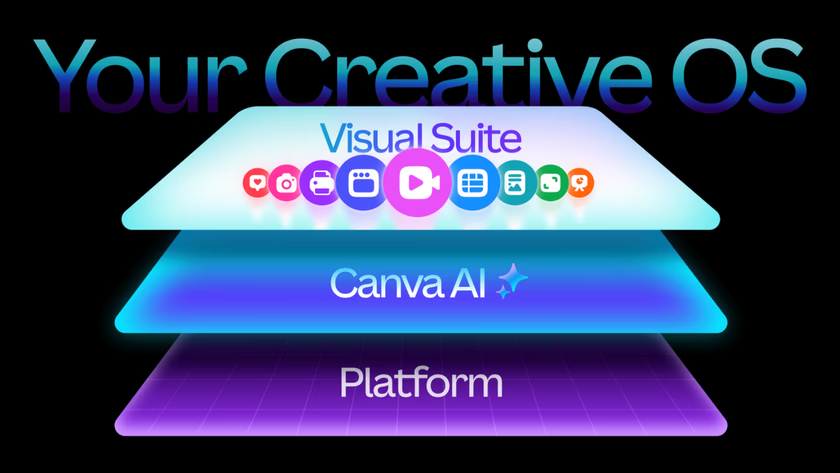
Canva has launched its own AI design model that understands layers, objects, and formats, marking a major step toward powering design creation natively within its platform.
The model can generate editable designs across multiple formats — including social media posts, presentations, whiteboards, and websites — rather than producing flat, static images.
According to Canva’s global head of product Robert Kawalsky, the company designed the model to allow users to begin with AI prompts but still refine results manually. “People want to start with a prompt and get far, but also be able to iterate directly themselves,” he said.
New AI Capabilities Across Canva
The new Canva AI assistant, first launched earlier this year, is now integrated throughout the design interface. Users can @mention the bot in comments to request ideas or media suggestions and can now use it to generate 3D objects or replicate art styles from existing designs.
The update also connects Canva’s spreadsheet and app-building tools, enabling users to turn stored data into interactive widgets or visualizations directly within designs.
Marketing and Analytics with Canva Grow
Canva has unveiled Canva Grow, an AI-powered marketing platform that merges creation and analytics. Using data from MagicBrief, an ad analytics company Canva acquired earlier this year, the platform helps marketers design, publish, and measure campaigns across platforms like Meta.
Canva also introduced a new email design feature that lets users create branded email layouts for marketing or transactional use, alongside a Forms product that rivals Google Forms for collecting client or audience responses.
Integration with Affinity
Following its acquisition of Affinity, Canva announced that Affinity will now be free forever. The professional design suite has been redesigned to merge vector, pixel, and layout tools under one interface. Affinity is now tightly integrated with Canva, allowing designers to create professional-grade assets in Affinity and move them seamlessly into Canva. Users can also use Canva AI inside Affinity for generative design and image creation.
Co-founder Cameron Adams described Canva’s ecosystem as a “Creative Operating System” — a term referring to how its tools, models, and workflows now function as an end-to-end creative platform. The company’s video editor has been redesigned with an expanded template library and simplified timeline controls for trimming and syncing clips.
Canva said its goal is to make the entire creative process accessible to marketers, designers, and teams without requiring advanced editing skills.
Featured image credits: Canva
For more stories like it, click the +Follow button at the top of this page to follow us.
